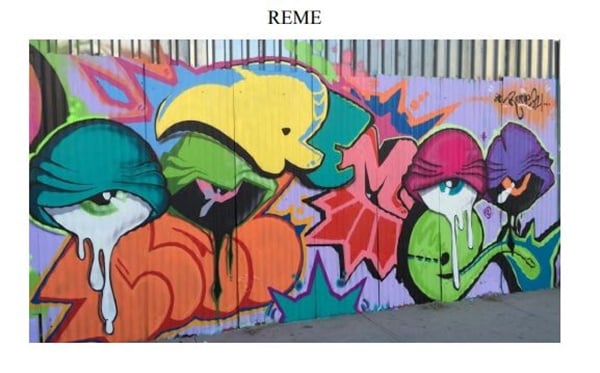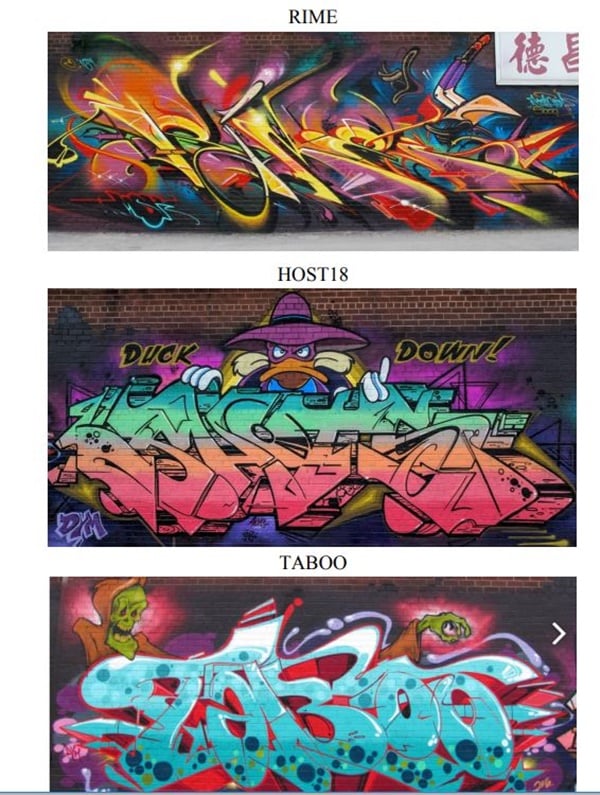Law & Politics
‘Livid’ Graffiti Artists Sue Fashion Label Vince Camuto for Using Their Artwork in Ads
The artists say the fashion label used their work without permission and damaged their credibility.

The artists say the fashion label used their work without permission and damaged their credibility.

Eileen Kinsella

A group of New York-based graffiti artists is suing fashion brand Vince Camuto for alleged misappropriation and infringement of their mural work after it was used in a recent marketing campaign for the label’s Spring/Summer 2017 line. The complaint, filed July 5 in US District Court, Central District of California, Western Division, seeks unspecified damages, restitution, and injunctive relief.
The suit is the latest in a recent string of cases in which artists are taking legal action against fashion designers for alleged unauthorized use of their imagery. Last week, photographer Michael Miller filed a suit against Kendall and Kylie Jenner, alleging that the famous sisters “misappropriated and wrongfully exploited” his images of late rapper Tupac Shakur for t-shirts for their fashion line. Last Year, the artist Rime (who is also a plaintiff in the Camuto case) sued Moschino creative director Jeremy Scott for incorporating his artwork into the brand’s couture clothing line.
Meanwhile, according to a report in ARTnews yesterday, artist Brad Troemel has taken to social media to complain that fashion label Vika Gazinskaya has directly lifted designs and imagery from his work for its spring 2018 ready-to-wear collection.
The four artist plaintiffs in the current case are Joseph Tierney (a.k.a. Rime), Cary Patraglia (a.k.a. Host18), Spencer Valdez (a.k.a. Taboo), and Keith Rowland (a.k.a. Reme).
According to the complaint, Reme painted a mural on a wall on Morgan Avenue in Brooklyn in April 2015. In April of 2016, Rime, Host18, and Taboo painted a group of outdoor murals on Boerum Street in Brooklyn, each of which features their pseudonyms.

Murals by Rime, Host18, and Taboo on Boerum Street in Brooklyn. Source: PACER
The complaint states that Camuto “inexplicably featured Plaintiffs’ Murals as the centerpiece of a marketing campaign for their Spring/Summer 2017 line, without Plaintiffs’ knowledge or consent. The Campaign included both video, and still imagery featuring the Murals. It debuted on Camuto’s social media accounts, including YouTube, Instagram, Twitter, and Facebook; and was featured on various fashion websites. Still images of the Murals taken from the campaign were featured throughout Camuto’s website as well as on third-party retailers such as Macy’s. The campaign videos were also broadcast in New York City taxicabs and retail stores.”

The video referenced in the complaint is titled “Bushwick Beats,” and text accompanying it reads “Wild Graffiti, Hot Moves, Cool Styles.”
The complaint goes on to state that Camuto’s “exploitation of [the artists’] work, brand, and persona damages their reputation, especially because they have carefully and selectively approached any association with corporate culture and mass-market consumerism,” adding that the artists are “diligent in controlling distribution channels of their work.”

The artists’ claim that they exerted control over the distribution of their work could strengthen their case, according to Sergio Muñoz Sarmiento, an art law expert based in New York. “One factor to keep in mind is that just because the graffiti—or any art, for that matter—is in public space, does not necessarily mean that that artwork or graffiti is not protected by intellectual property laws,” Muñoz Sarmiento wrote in an email. “The artists’ allegations that they police and guard their associations with commercial and corporate entities should make it easier for them to prove market harm.”
Jeff Gluck, the Los Angeles-based attorney representing the artists, summarized the case in simpler terms. “The images from the advertising campaign speak for themselves,” he told artnet News. “The artists are livid and look forward to litigation.”
Representatives for Vince Camuto had not responded to artnet News’s request for comment as of publication time.